Artist, innovator in the genre of decorative and applied painting, master of easel graphics.
He began to draw in childhood, watching his mother paint the stove and his father paint furniture. He trained as a bricklayer but returned home due to poor health and became a club manager, then the director of the house of culture in the village of Troitske, Liubashivka district. He worked as a graphic designer for the “Mayak” collective farm.
Without any specialized education, he created the “Perlyny stepu” (Pearls of the Steppe) center for folklorists and folk craftsmen in Troitske. They collected and studied interesting examples of embroidery, weaving, pysanka (Easter egg) painting, legends, and folklore, which undoubtedly spurred national self-awareness. A year later, this group evolved into the literary and artistic association “Stepovyi Kolos” (Steppe Ear of Grain), which collected folk-applied and decorative art pieces. A House of Folk Art was built in Troitske based on Paletsky’s project, and he taught decorative painting to schoolchildren and adults.
Paletsky was an innovator in the genre of decorative painting. He created his own ornamental compositions with a vibrant national flavor, stylizing historical figures and well-known literary characters. He had a particular interest in Cossack themes and the heroic epos of the Ukrainian people. He created a cycle of paintings based on Lesia Ukrainka’s drama-féerie “The Forest Song,” as well as a pagan cycle.
In 1971, Paletsky had his first solo exhibition at the Odesa Museum of Western and Eastern Art. That same year, he received a bronze medal as a laureate of an All-Union exhibition and the title “Honored Master of Folk Art.” His paintings were exhibited in Kyiv, Leningrad, Moscow, Izmail, Poltava, and in Poland, Bulgaria, Germany, the Czech Republic, and Japan, where they were highly acclaimed. In total, he had eight thematic exhibitions, each with 50-60 works. A color documentary film was made about the artist. In 1972, the “Mystetstvo” publishing house was scheduled to release an album of his work.
The international interest in Paletsky's work aroused the suspicion of communist art overseers. An expert from the Ministry of Culture saw in his works a “tendency to slide towards nationalism” and insistently advised him to adhere to the canons of decorative painting, drawing flora and fauna instead of Cossacks.
With the beginning of a new wave of repressions against the Ukrainian intelligentsia in 1972, work on his album was halted. Paletsky was criticized for the “idealization of the Cossack era.” Accusations followed that he was directing the “Stepovyi Kolos” association to study “superstitious” (in reality, ancient) customs and rituals, and that he was creating a museum of “remnants of capitalism” (evidently, of traditional life) in the Black Sea region. Under the pretext that he lacked specialized education, he was removed from teaching at the children’s decorative painting studio (by then, an art school). The Union of Artists “lost” the documents from his membership application. There was also a “signal” that Paletsky had seen an old embroidered towel with anchors and a trident somewhere. He came to the attention of the prosecutor. This outraged the artist, and he resigned from his position as a graphic designer for the collective farm, taking a job in a production brigade. Since his wife, the artist Maria Lazarevna, was also facing harassment, the couple planned to leave Troitske.
On March 7, 1978, his wife returned from work to find her husband dead in their home in a pool of blood, with a fractured skull and several broken ribs. Neighbors reported that a suspicious man had come with vodka, trying to force Paletsky to drink. When he refused, the unknown man began to beat him…
Not a single newspaper published an obituary or even a mention of the world-renowned artist’s death—only a notice in the “Information Bulletin of the Ukrainian Public Group to Promote the Implementation of the Helsinki Accords” No. 2 of 1978 and on Radio Liberty. Instead, the authorities spread rumors that Paletsky had been drunk, fell, and hit his head. His widow, frightened by anonymous threats, sold their small house for next to nothing and moved to relatives in Odesa. His younger brother, Yuriy, stopped painting. His other students grew quiet. Oleksandr Horkavenko also left the village, after collecting some of his teacher’s discarded works. His student Ivan Kozyrod preserved a portion of the works and letters.
After Ukraine gained independence, the “Stepovyi Kolos” decorative painting studio was revived, now led by Paletsky’s student, Larysa Babynets. In 1993, a film about Paletsky’s work was created. In 2007, the Department of Culture and Tourism of the Odesa Regional State Administration established the Rostyslav Paletsky Prize. Contemporary art critics recognize the Troitske school of decorative painting created by Paletsky, which draws from the eternal desire of the Ukrainian peasant to adorn the home. In the fall of 2008, Paletsky's works were exhibited at the Museum of Ukrainian Folk Decorative Art in Kyiv, and his first album was presented.
Bibliography:
*Informatsiini biuleteni Ukrainskoi hromadskoi hrupy spryiannia vykonanniu helsinkskykh uhod*. Compiled by Osyp Zinkevych. Ukrainian publishing house “Smoloskyp” named after V. Symonenko. Toronto – Baltimore, 1981. – [No. 2, 1978]. pp. 62-63
*Rosiishchennia Ukrainy*. A popular science collection. K.: Publication of the Ukrainian Congress Committee of America. – 1992. – p. 43.
*Ukrainska Hromadska Hrupa spryiannia vykonanniu Helsinkskykh uhod: Dokumenty i materialy*. In 4 volumes. Kharkiv Human Rights Protection Group. Kharkiv: Folio, 2001. Vol. 3. Documents and materials. August 1977 – December 10, 1978. Compiled by V.V. Ovsiienko. – pp. 117-118.
Maliuta, Ivan. *Za neziasovanykh obstavyn. 25 rokiv tomu zahynuv mytets-patriot Rostyslav Paletskyi* [Under Unexplained Circumstances. 25 Years Ago, the Patriot-Artist Rostyslav Paletsky Died] // *Shliakh peremohy*, No. 1-2 (2590), 2004. – January 1.
Nevmytyi, Volodymyr. *Iz zony zamovchuvannia* [From the Zone of Silence] // *Ukraina* journal, 2008. http://www.ukraina-magazine.com.ua/news
Fedoruk, Yuriy. *Povernennia Rostyslava Paletskoho* [The Return of Rostyslav Paletsky] // *Odeski visti*, No. 115 (3810). – 2008. – October 25. http:izvestiya.odessa.gov.ua/index.php?go
Fedoruk, Yuriy. *Shchedryi dyvotsvit narodnoho mystetstva* [The Generous Marvel of Folk Art] // *Odeski visti*, No. 44 (3880). – 2009. – April 23. http:izvestiya.odessa.gov.ua/index.php?go
Vasyl Ovsiienko, Kharkiv Human Rights Protection Group. May 4 and 9, 2009.
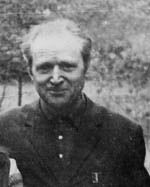
PALETSKYJ ROSTYSLAV MYKHAYLOVYCH
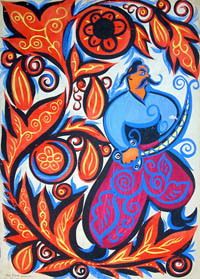
PALETSKYJ ROSTYSLAV MYKHAYLOVYCH
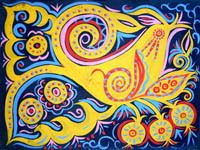
PALETSKYJ ROSTYSLAV MYKHAYLOVYCH
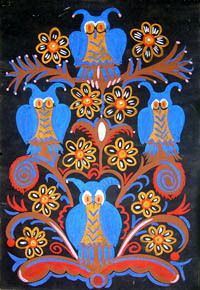
PALETSKYJ ROSTYSLAV MYKHAYLOVYCH
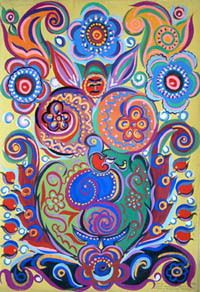
PALETSKYJ ROSTYSLAV MYKHAYLOVYCH